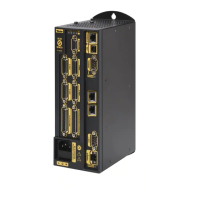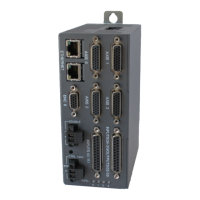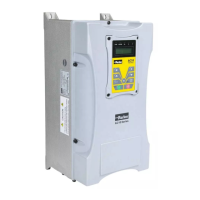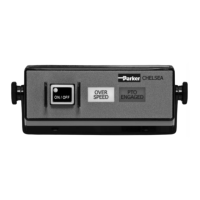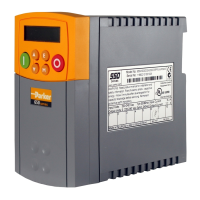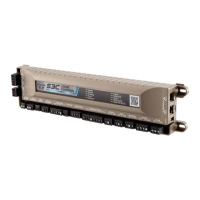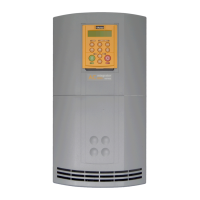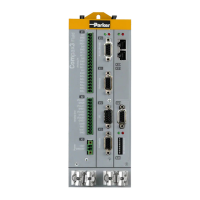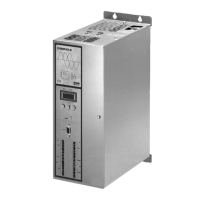Parker Hannifin
Before the network may become “operational,” the ACR9030 or ACR9040
must know the number of CNs, and the Node ID for each. In some
applications, the external nodes may be powered after the MN, and hence
not available for configuration on ACR9030 or ACR9040 power up. For this
reason, the user will be required to explicitly request network start via a
control flag.
The flag (bit 16640) is used for starting the network. The flag is self-clearing
(cleared automatically by the MN when the attempt to start the network has
completed). There are also status bits and parameters—such as error bits,
network state, cycle period, and drive states—to indicate the results of
starting the network.
There may be occasions when errors on the EPL network require that the
network be reset. The flag (bit 16641) is used for resetting the network. The
flag is self-clearing (cleared automatically by the MN when the attempt to
reset the network has completed). The status bits and parameters will also
indicate the results of resetting the network.
For safety reasons, the user may not start or reset the EPL network while
any EPLD axes are enabled. Also, the network may not be started if the
trajectory period (as specified with the
PERIOD command) is too low for the
number of nodes on the network. The MN response to these conditions
depends on whether the start or reset attempt was made via the
EPLC
command or by explicitly setting bit 16640 or 16641. If the attempt is made
by using the EPLC command, an appropriate error message will appear, and
the control bit will not get set internally. If the attempt is made by explicitly
setting bit 16640 or 16641, then the bit will self-clear, and an additional
diagnostic status bit will appear. These bits are detailed below.
The terms “operational” and “reset” in this section correspond to the network
states given in the table in the section “EPL Network States, LED Indications,
Error Codes” on page 173. The network can be “operational” even if one or
more nodes are not responding. This simply means the MN is sending poll
requests to those nodes that it has found, and requesting identity packets
from those nodes it is trying to find. If the user resets the network using bit
16641, then the network state goes from operational to reset, and stays that
way until it is restarted.
Diagnostic Reports (DIAG EPLD and EPLC)
Two commands allow different levels of diagnostic reporting. The DIAG
EPLD
command reports a comprehensive list of the current values of network
and node status bits and parameters, along with brief descriptions of each.
These include all setup vales as well as current status.
A more abbreviated report is available with the
EPLC command, issued
without the
ON or OFF modifiers. This command reports only network and
node status, and is very compact on the screen.
Network Information Parameters and Flags
After the MN starts the EPL network and characterizes nodes, it fills in an
information parameter block for the network and each EPL drive. It also
updates the EPL Network Control/Status flags shown in Table 71. The
control flags are requests to the controller. These are self-clearing flags, and
will be cleared automatically when the request has been completed. The
Appendix H ETHERNET Powerlink 171
www.comoso.com

